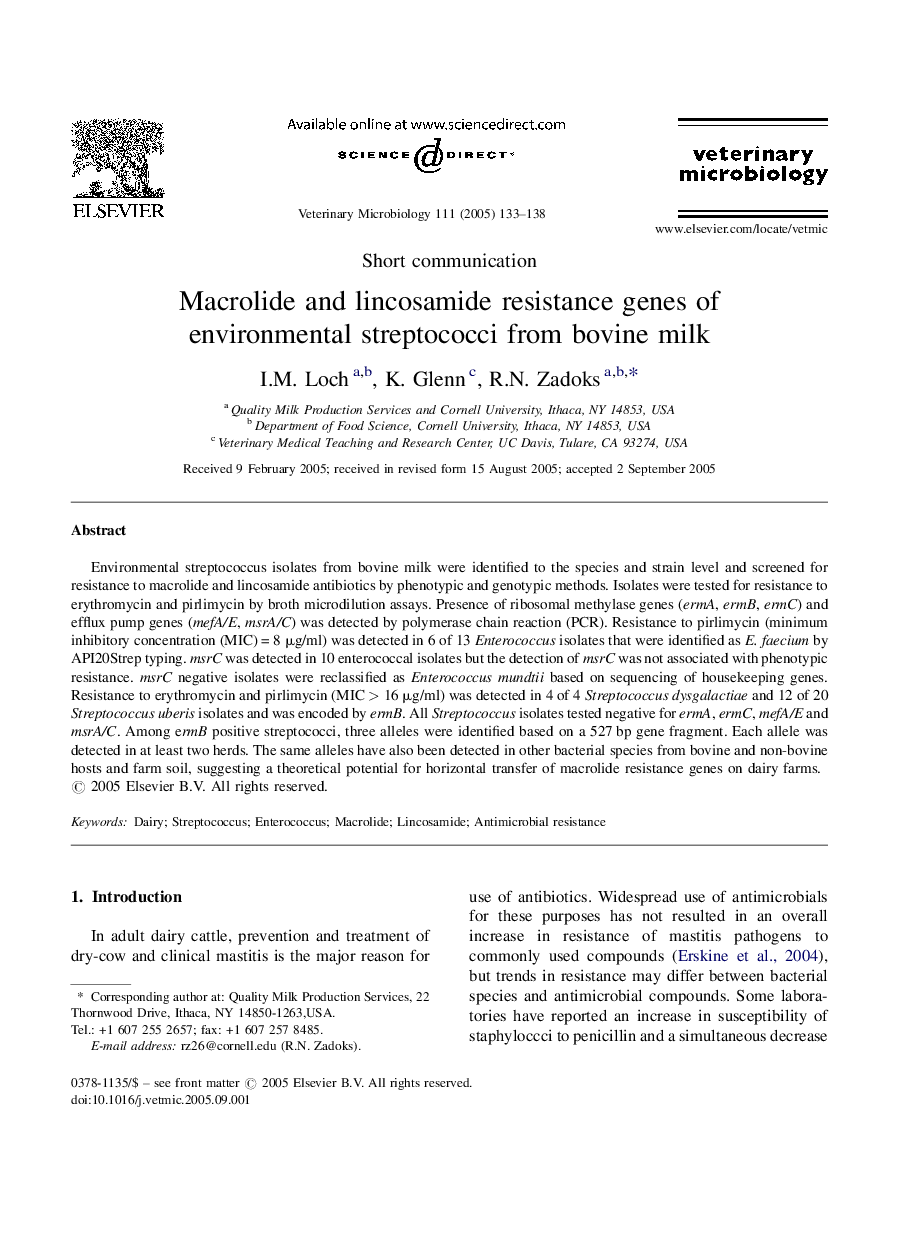| Article ID | Journal | Published Year | Pages | File Type |
|---|---|---|---|---|
| 8989404 | Veterinary Microbiology | 2005 | 6 Pages |
Abstract
Environmental streptococcus isolates from bovine milk were identified to the species and strain level and screened for resistance to macrolide and lincosamide antibiotics by phenotypic and genotypic methods. Isolates were tested for resistance to erythromycin and pirlimycin by broth microdilution assays. Presence of ribosomal methylase genes (ermA, ermB, ermC) and efflux pump genes (mefA/E, msrA/C) was detected by polymerase chain reaction (PCR). Resistance to pirlimycin (minimum inhibitory concentration (MIC) = 8 μg/ml) was detected in 6 of 13 Enterococcus isolates that were identified as E. faecium by API20Strep typing. msrC was detected in 10 enterococcal isolates but the detection of msrC was not associated with phenotypic resistance. msrC negative isolates were reclassified as Enterococcus mundtii based on sequencing of housekeeping genes. Resistance to erythromycin and pirlimycin (MIC > 16 μg/ml) was detected in 4 of 4 Streptococcus dysgalactiae and 12 of 20 Streptococcus uberis isolates and was encoded by ermB. All Streptococcus isolates tested negative for ermA, ermC, mefA/E and msrA/C. Among ermB positive streptococci, three alleles were identified based on a 527 bp gene fragment. Each allele was detected in at least two herds. The same alleles have also been detected in other bacterial species from bovine and non-bovine hosts and farm soil, suggesting a theoretical potential for horizontal transfer of macrolide resistance genes on dairy farms.
Related Topics
Life Sciences
Agricultural and Biological Sciences
Animal Science and Zoology
Authors
I.M. Loch, K. Glenn, R.N. Zadoks,
